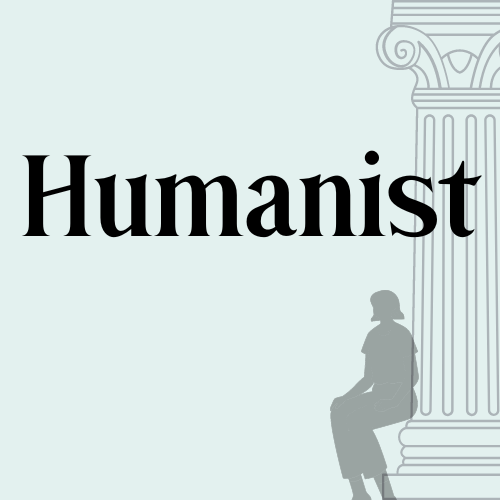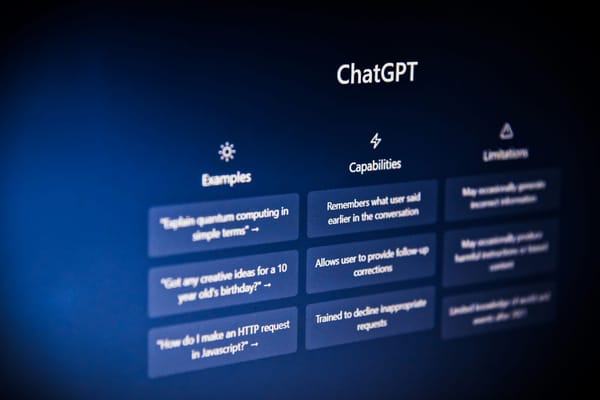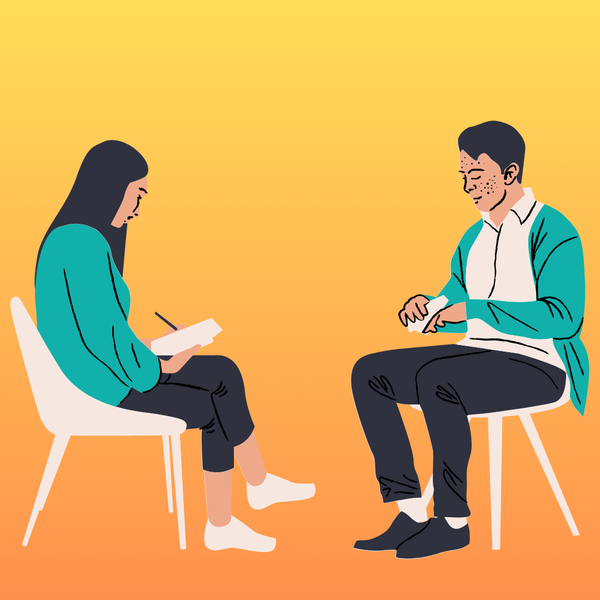Making online courses more accessible with Universal Design for Learning
UDL can and should include using tech accessibility tools, but also goes much further. At the end of the day, UDL is about getting rid of artificial barriers so that everyone can get on with the business of learning.

Does anyone else feel their eyes getting tired and blurry by the end of the day, so it's hard to read a book? I mean an old-fashioned one, with real paper. My laptop or tablet is easier to read: at night, I put it in "dark mode" and/or "night mode," adjust the screen brightness, make fonts bigger, and generally set things up just the way I like them. (So that I can doomscroll to the detriment of my mental state in relative physical comfort.) Or I listen to audio books instead. You might even be using a screen reader to turn this post into audio while you're exercising or washing dishes or knitting. If it's a book I really want to think about and savor, like Emily Wilson's Odyssey translation (read wonderfully by Claire Danes), I even slow down the playback speed of the book to 75%. (During the day, I'm more likely to speed up videos or audio to hold my attention better.) I might read while lying in bed, lying on a couch, reclining in a chair, or sitting at a table, depending on what feels comfortable. I am able to read a book without these tools and accommodations, but it's a whole lot easier and more accessible for me with them.
The more accessibility tools we have at our disposal, the more comfortable we can all be, and the easier it is for us to do whatever we want to do and learn what we want to learn. This is the basic principle behind Universal Design for Learning, or UDL. UDL is one specific framework that could fall under the larger umbrella of student-centered pedagogy. It's an extension of the architectural principle of Universal Design, pioneered by architect and wheelchair user Ronald Mace at North Carolina State.
Standard learning design tends to have a "typical learner" in mind. There is no real individual who is a "typical learner" in every way; people learn at different speeds in different subjects, and benefit from different teaching approaches and different types of practice. Often, if an instructor isn't just patterning a course on the courses they took, they are essentially designing the course for themselves, only because that's the set of learning preferences they know. Instead of designing for an imaginary typical learner, education scholars suggest, we should be designing for every learner. If typical higher ed course design didn't work for Albert Einstein and Bill Gates, it leaves a lot to be desired.
For teacher educators Kavita Rao and Grace Meo, recognizing and designing for this reality of learner variability is the heart of UDL. Meo directs professional learning for CAST, the Center for Applied Special Technology, the organization that first established the UDL Guidelines. The co-founders of CAST, psychologists and educators Anne Meyer and David Rose, published two important volumes that set the initial framework for UDL: The Universally Designed Classroom (2005) and A Practical Reader in Universal Design for Learning (2006):
As Rose recalls it, the schools tended to view these students as "broken," and they paid CAST to help them use the powerful assistive tools of a computer to "unbreak" them. But the team at CAST started thinking that the problem was not with the students but with the school curriculums and the barriers they placed in front of anyone who didn't learn in a certain way. Most schools were asking students to adjust themselves, whatever kind of students they were, to a rigid system; CAST wanted the system to be elastic enough to fit all the kids. "Maybe the other way to look at it is that the curriculum was broken. That it was never good enough to handle the variability of the kids who are in our schools," says Rose. (Harvard Ed Magazine, 2014)
Meyer and Rose also compared kids to seeds: any seed has the potential to grow, as long as it is planted in the right conditions, so a UDL classroom is like a BioDome of diverse habitats. The CAST catalog of books now includes more than 40 offerings, and there are plenty of books from other publishers as well as scholarly articles out there now, proving the efficacy of UDL in creating more enjoyable, meaningful, and effective learning experiences for more students.
Since many of us will be teaching virtually this summer, I thought it would be an opportune moment to think about where to start bringing some UDL principles to online teaching. It can and should include using tech accessibility tools, but also goes much further.
The UDL Guidelines
CAST's UDL Guidelines are broken into three categories. Overall, across all three categories, David Rose described the ethos as "tight goals, flexible means, as opposed to the tight goals and tight means that schools tend to have" – providing choices or options, so that every learner can choose what works best for them in getting to the course learning goals.
The first category, Engagement, has to do with motivating students to learn. The second, Representation, pertains to how we introduce new knowledge and ideas to students. The third, Action & Expression, has to do with the ways in which students demonstrate the knowledge, ideas, and skills they've acquired on assignments or assessments.

When I started reading about this topic, I'm sorry to say, I was surprised to learn that the UDL Guidelines cover more than just the Representation column. In each, course designers are encouraged to let students "choose your own adventure."
Representation
In the "emergency online teaching" era of 2020, like many other instructors and course designers, I got a crash course in tech accessibility features and considerations for inclusive teaching. I learned to make sure that any videos I included as course content had captions, and learned that it's really easy to add captions to a YouTube video. Sometimes I'd post a video on YouTube and hide it from public view, just so that I could use the caption feature. Zoom's automatic captions feature and other options for live captioning came along a few years later. It wasn't on my radar then to think about providing readings in the form of digital text, rather than PDFs; you can make PDFs bigger or smaller to make them easier on the eyes, of course, but digital text can also be manipulated in other ways or read aloud by screen readers. Sheryl Burgstahler, another leader in the UDL world based at U. of Washington, offers a helpful checklist for accessible IT.
In slide decks, I continued my practice of engaging students by using pictures, highlighted words, diagrams, timelines, and animations – which are not just silly window dressing, but the sort of things that fall under the UDL principles of providing visual information and graphic organizers to connect ideas or represent relationships, and representing or illustrating ideas in multiple media. (The UDL Guidelines chart is an excellent example of a graphic organizer, as you might expect!) Every time I quoted Cicero, I showed an image of (a statue of) Cicero – I don't want quotations to be isolated from each other or separate from the historical, thinking, fallible individual who wrote them. In a mythology lecture course and accompanying blog, I used artistic representations of myths from many different eras to illustrate the stories, make them more memorable, and highlight different ways of representing the stories. In Roman Civ, I used images of archeological finds and sites from non-Roman cultures like the Scythians, Goths, Celts, and Carthaginians to include representations unmediated by their Roman enemies. Beyond slide decks, you can also add images to assignments, quizzes, or modules in your LMS (Canvas, Blackboard, et al.), as visual information and memory aids.
One semester, a student had asked if I'd mind posting my slide decks before class, so that she could download them and take notes in the file. I continued doing that after that semester, just in case it would be helpful to other students. This, too, is a good illustration of why UDL is helpful: instead of waiting for an individual student to work up the courage to ask for a little adaptation that would help them, you just make the adaptation available from the start to any student who may like it.
This column of the UDL guidelines also directs instructors to make sure that there isn't any inaccessible jargon or language that will present a stumbling block to some learners. In an online course, you can hyperlink unfamiliar names or unusual terms to web pages or videos that will explain them, providing background knowledge to level the playing field. This includes assignment instructions themselves, not just course content; I had a student from overseas once and found myself explaining the standard American high school five-paragraph essay to him, not because I wanted him to write one (I very much didn't), but because I wanted him to know the same basic framework that other students in the class were using as a starting point for the essay I'd assigned. Going forward, I could have provided a sample essay, basic framework, a link to existing templates, and information about writing center services together with instructions for all essay assignments, right off the bat.
Action & Expression
One aspect of UDL that I hadn't come across before now, but which squares very much with my understanding of student-centered pedagogy, is providing choices in the form or medium of assignments and assessments that students submit. If we each have their own preferences for how we take in knowledge and ideas, it's no surprise that we also have our own preferences for how we express them.
I, for instance, enjoy – and, crucially, find that I retain and process ideas best by – writing long discursive blog posts, which seems to be atypical for most learners. As you take in this post, you might be jotting down bullet points or drawing a concept map about UDL. If I asked you to explain it to someone else, you might record a voice note, podcast, or quick video, or make a slide deck or a conference-style poster. Or you might also write a long discursive blog post. If your goal is to demonstrate that you understand UDL, any of those media will get you to that end goal. Instead of forcing your learning into a prescribed medium or framework, you can express it in the way that makes sense to you. One instructor even allowed his students the option of writing their own exam and answer key as a final assessment.
In assignments on Canvas, Blackboard, or any other LMS, you can give students a range of options for file types to submit, including audio or visual. If, for example, the goal is to read and understand the major events of a book of the Odyssey, you could ask students to submit an outline or summary in the form of bullet points, full text, a recorded audio voice note or video, a slide deck, a concept map, or a visual storyboard of images. Videos and audio can take longer to review and grade, so you could suggest (and make it clear that it's allowable) that students use voice-to-text features to generate a text answer. You can also have students annotate PDFs in whatever way they choose, and submit their annotations as an assignment – this can be done within Canvas, on Hypothes.is, in Preview on a Mac, or in Adobe, and probably with other tools as well (share in the comments!).
The important thing is to provide really specific details about the goal of the assignment, and specific parameters for what will constitute a successful assignment. (For example, "Odysseus lies" is a good summary of several books of the Odyssey, but may be insufficient for a successful assignment). Students in an online course need even more clarity and specificity in these instructions than students in a face-to-face classroom do. You might want to provide an example of each optional type of assignment. It would also be useful to provide instructions on what tools students can use to create them, to encourage exploration and learning new tools.
The UDL Guidelines also suggest making available "graduated levels of support," in case learners get stuck. You could offer a partial outline of a reading or a list of reading questions to help students along. Practice quizzes could fall under this category, because they support students in practicing retrieval. For term papers and projects, breaking (i.e. scaffolding) these large, high-stakes assignments into small steps (an annotated bibliography, an abstract, an outline, etc.) creates more opportunities to address confusion or misunderstandings in the parameters of the assignment, and more opportunities to provide more choices in media of expression.
Action & Expression also include the processes students use to plan and execute their assignments, under the heading of Executive Function. This could look like asking students to identify what searches they will run on what platform, what sources of information they will use, when they plan to reach certain points in completing the assignment, and what they'd like to demonstrate or achieve on the assignment, including mastery of particular tech tools. I'd like to think that although the UDL Guidelines antedate the coming of ChatGPT, this kind of support for executive function could help students to prevent the sort of mental blocks or panic that may lead to plagiarizing assignments using AI tools.
On that note, it's the Engagement column of the Guidelines that probably offers the best deterrent to AI-assisted plagiarizing.
Engagement
Universal Design for Learning isn't just about making sure that every student can learn, but also helps to ensure that students want to learn. One way to support engagement as course designers is to give learners their choice of topics to learn or write about. When I did this, I always found that I needed to provide a list of options, rather than making the topic totally open (yet another way in which pedagogy resembles Top Chef, I might add), to start students off on the right foot. I tried to choose topics that connected to contemporary issues in which my students might already have an interest. The key idea is authenticity: allowing students to learn about and work on things they might really engage with in the world, even if we weren't grading them. Again, I'm not going to say that this will inspire all students to give up AI-assisted plagiarism, but it does help to address feelings that writing a paper is pointless or totally irrelevant to a student's life or goals.
Learning together with others can also be a lot more engaging than learning in isolation. Instead of the instructor being the only one who sees students' work, hears what they're thinking, and responds with feedback, course designers can choose presentations, discussion fora, peer feedback workshops, and other activities where students can learn from each other and share their perspectives. One of the great luxuries of teaching Greek and Latin was having nerds for students, who really just enjoyed learning weird stuff about the ancient Mediterranean for its own sake, which is all the more reason that they ought to have opportunities to connect with each other as they learn it.
I'll conclude with one last element of the Engagement guidelines: "minimizing threats and distractions." It's understandable that students want to keep learning remotely, for the same reasons that I like working remotely: at home, I can make my environment as accessible and accommodating as I want. I'm not in a space or a chair that wasn't selected for my comfort, and I'm not constrained to do certain work at a certain time of day. I can turn notifications on or off to help my focus or reduce anxiety. I have ready access to food and drinks and a bathroom. In-person learning doesn't offer those comforts. And for many students, traditional learning spaces are not just uncomfortable but actually threatening, carrying a constant undertone of messaging (and sometimes overt messages) that the space does not welcome them. Tesha Fitzgerald intertwines UDL with anti-racist education as a way to honor every student, an alternative to the learned powerlessness that many students feel. At the end of the day, UDL is about getting rid of artificial barriers so that everyone can get on with the business of learning.
Further reading
CripAntiquity's resources on accessibility in pedagogy and in academia more broadly
UDL on Campus toolkit from CAST
You could also check out online courses in UDL, which are available from many universities, from CAST, or from Quality Matters





